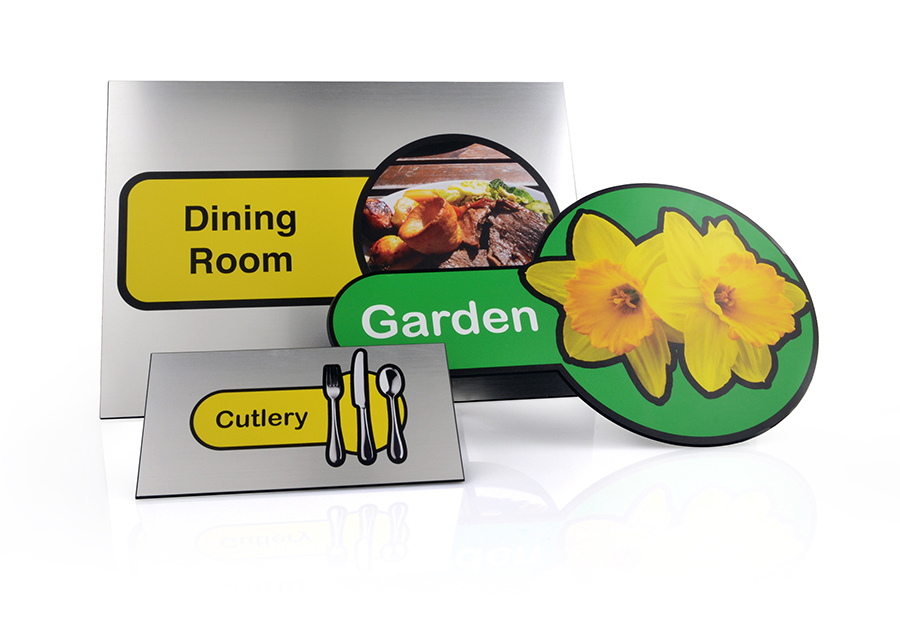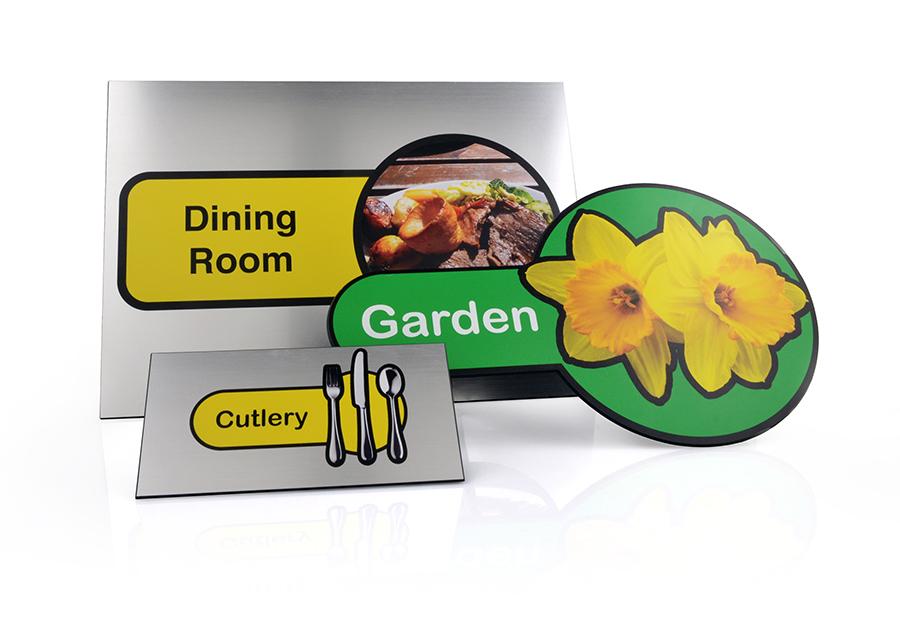We use cookies to make your experience better. To comply with the new e-Privacy directive, we need to ask for your consent to set the cookies. Learn more.
Handy 15-point checklist to help make sure your care home signage is dementia-friendly

Finding our way around unfamiliar surroundings comes as second nature to most of us. We rely on directional signage to get from A to B and can usually find our way back again. We can distinguish between similar looking rooms and identical corridors. Visiting somewhere new and discovering our surroundings is often exciting, yet for people living with dementia, the experience can be very different. Impaired memory, disorientation and difficulty processing information means that even in familiar surroundings, they can become lost and confused. Navigating their way around somewhere unfamiliar, a care home, for example, can magnify the problem.
So how can you support residents living with dementia find their way around your care home more easily? We help care homes across the UK make their environment more dementia-friendly with off-the-shelf and bespoke dementia-friendly signage - here’s a handy checklist to make sure you’re heading in the right direction too.
Is wayfinding signage installed in areas where residents must make a decision about which direction to take?
Making decisions can be difficult for someone living with dementia. Making the process as easy as possible helps reduce frustration and worry.
Is directional signage complemented by signage leading residents back to where they started?
Often the focus is on helping residents get to where they want to go, for example finding the toilet from the living room. Be sure to consider what signage is needed to help them navigate their way back too, and keep it well spaced along the route to avoid confusion.
Do doors exiting rooms feature ‘way out’ signage?
In spaces where there are closed doors or where residents must pass through them to reach their destination, clearly marking them with exit signs helps avoid panic if they don’t remember how they entered the room.
Are there plaques on doors leading off corridors?
Corridors can be long, and many look similar, especially to people living with dementia. Placing signage on doors to tell residents which room they’re passing or entering helps with orientation and distinguishing corridors.
Are bedrooms easily identifiable by personalised signage?
Bedroom doors often look the same along corridors that all blend into one. Personalised signage helps residents identify their room, and can include a room number, the resident’s name, a relevant image or even their photograph. The background colour could also be chosen by residents to add extra personalisation and familiarity.
Is signage attached to doors rather than walls?
Signs mounted next to doors can be easily missed. Placing plaques on doors avoids confusion and clearly identifies the entrance.
Is bathroom signage highly distinguishable?
Creating signage which stands out amongst the rest, for rooms such as toilets and bathrooms, helps avoid anxiety and accidents in desperate situations.
Are there signs on cupboards and drawers?
Placing signs on cupboards and drawers to tell residents where they can find items helps them retain some independence. Simply being able to make their own cup of tea can make a big difference to their confidence and wellbeing.
Do signs include only the necessary information?
Visual clutter can cause confusion and is a distraction for someone living with dementia. Keep wording to titles or sentences and stick to essential information.
Are signs legible to all residents?
Fonts that are easy to decipher can be read more easily and quickly. Avoid decorative fonts and keep spacing even between letters. Arial is a good all-around font for legibility. And steer clear of using all uppercase letters, they can be tricky to read at a glance.
Do signs include pictures as well as text?
Visual prompts such as pictures make signage easier to understand. Images can also create a memory of the room which helps future wayfinding and reduces uncertainty. Solid shapes are more accessible than line drawings. And wavy lines can appear to be moving, so avoid at all costs.
Are signs mounted at eye level?
While signage mounted above eye level is helpful for pointing out markers and is easily seen from a distance, many people look down while they’re walking. Signs at eye level, approximately 1.2m, are more likely to be noticed. Often people living with dementia will ask a member of staff for directions if they can’t see a sign and so a dementia-friendly name badge is crucial.
Are signs at least A4-size/210mm x 297mm?
Signs must be large enough for people to see, even with a visual impairment. In spacious rooms and outside, signage should be even bigger to be seen more clearly.
Is there enough contrast between the background colour and colour of the text?
Contrast can be created with different hues, for example, blue text on a yellow background. Using different colour saturation or tone also creates a distinction and makes the wording more legible. Remember, a white background can easily blend in with surroundings. Be sure to consider colours less recognisable by older people too – for example shades of blue, green and purple.
Are signs durable?
Signage can quickly become dirty and dusty making them harder to read. Robust signage can be easily cleaned over and again and so offer good value for money.
Our expert advisors and in-house design team can help you design dementia-friendly signage for your care home at no extra cost. Simply call us on 01623 723112.

